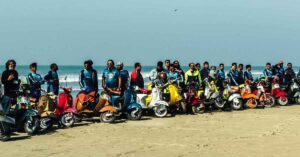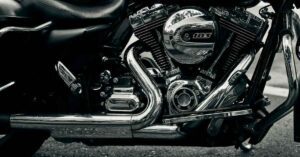Riding a motorcycle is exhilarating, but it’s also a dynamic experience heavily influenced by environmental factors. From scorching heat to pouring rain, different climate conditions can dramatically impact how your motorcycle can be managed on the road.
In this comprehensive guide on how to manage motorcycle in bad weather, we’ll explore how various weather situations affect your ride and provide actionable tips. By following the tips, you will be able to maintain control and safety regardless of what Mother Nature throws your way.
How to Manage Motorcycle in Bad Weather?
Before diving into specific weather conditions, it’s important to understand the fundamental relationship between climate and motorcycle dynamics.
A motorcycle’s handling is primarily determined by four factors:
- Traction between tires and road
- Stability of the machine
- Rider input and control
- Environmental conditions
When climate variables change, they directly affect the first three factors, creating a cascade effect that alters your riding experience. According to a study by the Motorcycle Safety Foundation, approximately 22% of motorcycle accidents involve adverse weather conditions as a contributing factor.
How to Manage Motorcycle in Bad Weather: Rain and Wet Conditions
How Rain Affects Your Motorcycle
Rain presents one of the most common challenges for motorcyclists worldwide. When precipitation hits the road, several critical changes occur:
Reduced Traction
Water creates a barrier between your tires and the road surface, reducing friction by up to 50% compared to dry conditions.
Hydroplaning Risk
At speeds above 35 mph, water can build up faster than your tires can disperse it, causing your motorcycle to hydroplane.
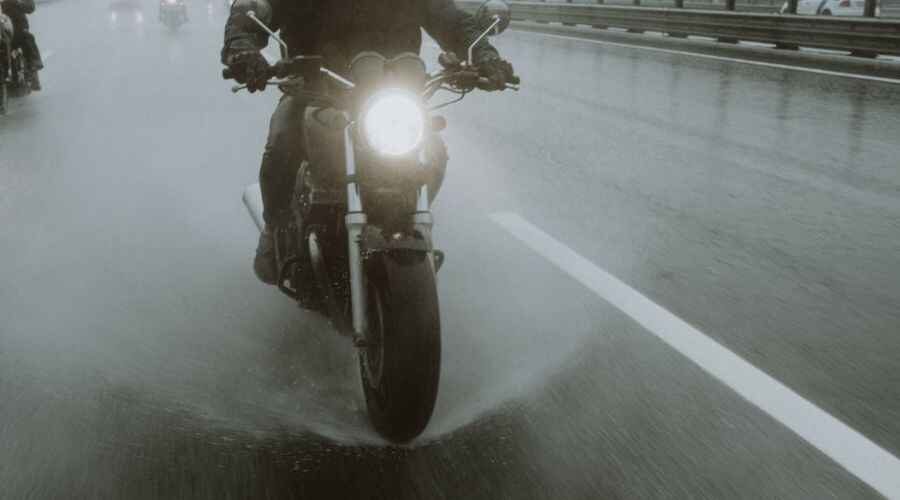
Brake Performance Degradation
Wet brake rotors and pads have diminished stopping power, increasing braking distances by 30-40%.
Visibility Issues
Rain not only reduces what you can see but also makes you less visible to other road users.
Essential Handling Techniques for Wet Weather
Maintaining Control Fundamentals
How to manage motorcycle in adverse weather like rainy season? To maintain control in wet conditions:
- Smooth Inputs: Make all throttle, brake, and steering inputs progressively and gently. Sudden actions that work in dry conditions can cause loss of traction when wet.
- Gradual Braking: Apply brakes earlier and with less force than in dry conditions. Use both brakes simultaneously but with emphasis on the rear brake to reduce the risk of front-wheel lockup.
- Controlled Acceleration: Apply throttle gradually, especially when exiting corners, to prevent rear wheel spin.
- Relaxed Grip: Maintain a loose but firm grip on the handlebars. Tension in your arms can translate to jerky inputs.
Positioning and Spacing
- Increase Following Distance: Allow 3-4 times the normal following distance to account for longer stopping distances and reduced visibility.
- Choose the Right Line: Avoid painted lines, manhole covers, railroad tracks, and the center of lanes where oil tends to accumulate. Seek the driest part of your lane, typically where car tires have cleared water.
- Maintain Upright Position: Minimize lean angles in corners by 15-20% compared to dry conditions. Take corners wider and slower to maintain more of the tire’s contact patch on the road.
Visibility Strategies
- Position for Visibility: Ride in the portion of your lane that maximizes your visibility to other road users.
- Use High-Visibility Gear: Wear bright or reflective clothing to enhance your visibility to other drivers in reduced light conditions.
- Manage Helmet Fogging: Apply anti-fog treatment to your visor or use a pinlock insert to maintain clear vision.
Equipment Considerations
Tire Technology and Maintenance
- Rain-Specific Motorcycle Tires: Modern options like the Michelin Road 5, Pirelli Angel GT II, or Metzeler Roadtec 01 use advanced sipes and silica compounds to channel water away and maintain grip in wet conditions.
- Proper Tire Pressure: Check tire pressure regularly. Slightly reducing pressure (by 2-3 PSI from manufacturer recommendations) can increase the contact patch, but too low pressure risks tire damage.
- Adequate Tread Depth: Ensure your tires have sufficient tread depth to channel water away efficiently. Replace tires when they approach minimum tread requirements.
Effective Rain Gear
- Quality Waterproof Gear: Invest in purpose-built motorcycle rain gear that keeps you dry without restricting movement. Being comfortable helps maintain focus.
- Waterproof Gloves and Boots: Cold, wet extremities can reduce your reaction time and control precision.
- Water-Resistant Luggage: Use waterproof luggage or rain covers to prevent your belongings from becoming waterlogged and creating balance issues.
Advanced Techniques
Handling Specific Hazards
- Bridge Decks: Exercise extreme caution on metal bridge decks, which become extremely slippery when wet.
- Standing Water: Avoid riding through puddles when possible, as they may conceal potholes or debris.
- Hydroplaning Response: If hydroplaning occurs, maintain a straight line, avoid braking, and gently roll off the throttle until traction is regained.
Mental Approach
- Increase Mental Scanning Distance: Look further ahead to anticipate hazards and plan your actions.
- Reduce Ride Duration: Consider shorter rides in wet conditions to prevent fatigue, which can compromise judgment and reaction time.
- Know When to Stop: Recognize when conditions exceed your comfort level or skill set. Finding shelter and waiting for conditions to improve is sometimes the wisest choice.
By implementing these techniques and understanding wet weather riding dynamics, you can significantly reduce risk while maintaining confidence and control on wet roads.
Please read “12-Step Tutorial on How to Ride Motorcycle in Rain” to learn more about riding a motorcycle in rain safely.
Hot Weather and High Temperatures: The Heat Challenge
How Heat Affects Your Motorcycle
When temperatures climb above 90°F (32°C), both you and your motorcycle face unique challenges:
Tire Behavior Changes
Excessive heat can cause tire pressure to increase and rubber compounds to behave differently.
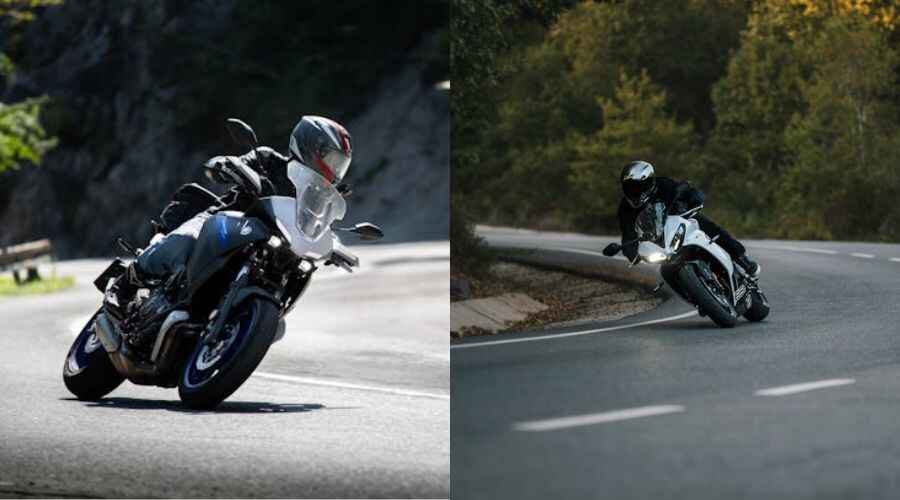
Engine Performance
Air-cooled engines particularly can struggle with heat dissipation during prolonged rides in hot weather.
Rider Fatigue
Heat exhaustion becomes a serious risk factor, affecting concentration and reaction times.
Surface Hazards
Hot asphalt can become soft and unpredictable, especially at recently resurfaced sections.
Handling Tips for Hot Weather
How to manage motorcycle in adverse weather like hot? To maintain optimal handling in hot conditions:
Check Tire Pressure
Measure when tires are cold and adjust according to manufacturer recommendations for hot weather.
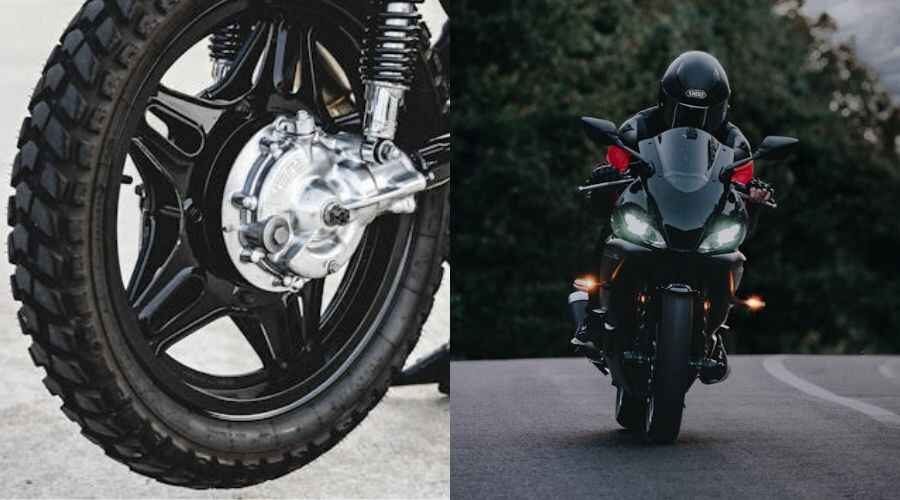
Stay Hydrated
Dehydration significantly impairs reaction time and judgment.
Consider Heat-Resistant Gear
Technical riding gear like the REV’IT! Tornado 3 series balances protection with ventilation.
Time Your Rides
Consider riding during cooler morning or evening hours when possible.
Cold Weather and Freezing Conditions: The Winter Challenge
How Cold Affects Your Motorcycle
Riding in temperatures below 45°F (7°C) introduces several handling considerations:
- Reduced Tire Grip: Cold rubber compounds provide significantly less traction until properly warmed up.
- Black Ice Risk: Nearly invisible patches of ice can form in shaded areas, bridges, and overpasses.
- Mechanical Stiffness: Oil and suspension components become more viscous, changing handling characteristics.
- Battery Performance: Cold temperatures can reduce battery efficiency by up to 50%.
Handling Tips for Cold Weather
How to manage motorcycle in adverse weather like cold? For safer winter riding:
- Warm-Up Period: Allow both your tires and engine appropriate warm-up time before aggressive riding.
- Layer Effectively: Cold-induced stiffness in your body affects control inputs; proper gear like Gerbing Heated Clothing can maintain dexterity.
- Scan for Ice: Develop the habit of looking for telltale shiny patches, especially in early morning or evening rides.
- Consider Winter Tires: Products like Continental’s ContiRoad winter tires offer compounds specifically designed for cold-weather performance.
Wind and Gusty Conditions: The Invisible Challenge
How Wind Affects Your Motorcycle
Wind is perhaps the most underestimated climate factor affecting motorcycle handling:
- Directional Stability: Crosswinds can push a motorcycle across lanes, particularly affecting lighter bikes and those with larger fairings.
- Unpredictable Gusts: Areas between buildings, gaps in roadside barriers, or passing large vehicles can create sudden wind changes.
- Aerodynamic Effects: Headwinds increase drag and fuel consumption, while tailwinds can create deceptive handling sensations.
- Wind Chill Factor: Even moderate speeds combined with wind significantly lower effective temperatures.
Handling Tips for Windy Conditions
To maintain control in windy situations:
- Body Position: Slightly loosen your grip and use your lower body to maintain stability.
- Speed Adjustment: Reduce speed to minimize aerodynamic effects in strong crosswinds.
- Anticipate Wind Shadows: Be prepared for sudden changes when passing large vehicles or structures that block the wind.
- Consider Windscreens: Aftermarket solutions like National Cycle VStream Windscreens can improve aerodynamics in challenging conditions.
Foggy Conditions: The Visibility Challenge
How Fog Affects Your Motorcycle Handling
Fog creates a uniquely challenging riding environment:
- Severely Limited Visibility: Typical fog reduces visibility to under 1,000 feet, with dense fog limiting sight to less than 300 feet.
- Surface Moisture: Fog deposits moisture on roads and can make surfaces unexpectedly slippery.
- Disorientation Risk: The lack of visual reference points can lead to disorientation and poor speed judgment.
- Light Refraction: Headlights can reflect back in fog, potentially worsening visibility.
Handling Tips for Foggy Conditions
To navigate safely through fog:
- Use Proper Lighting: Consider yellow auxiliary lights which penetrate fog better than white lights.
- Apply Anti-Fog Solutions: Products like Pinlock inserts for visors prevent condensation.
- Reduce Speed Dramatically: Your stopping distance should never exceed your visibility distance.
- Follow Edge Lines: Use road edge markings rather than center lines for guidance when visibility is severely limited.
Altitude Changes: The Pressure Challenge
How Altitude Affects Your Motorcycle
When riding in mountainous regions with significant elevation changes:
- Engine Performance: Carbureted bikes particularly suffer from reduced power at high altitudes due to thinner air.
- Tire Pressure Fluctuations: Ascending or descending several thousand feet can meaningfully change your tire pressure.
- Weather Variability: Mountain environments can experience rapid weather changes that affect road conditions.
- Temperature Gradients: Temperatures can drop approximately 3.5°F for every 1,000 feet of elevation gain.
Handling Tips for Altitude Changes
For better handling during elevation changes:
- Check Tire Pressure Regularly: Adjust according to your current elevation when on multi-day mountain trips.
- Be Mindful of Fuel Mixture: Carbureted motorcycles may need adjustment for high-altitude performance.
- Layer Clothing: Be prepared for rapid temperature changes as you change elevation.
- Consider Engine Tuning: For frequent high-altitude riders, products like the Dynojet Power Commander allow for customized fuel mapping.
Transitional Weather: The Unpredictable Challenge
How Changing Weather Affects Your Motorcycle
Perhaps most dangerous are conditions where weather is actively changing:
- First Rain After Dry Spell: Oil and grime rise to the surface, creating extremely slippery conditions.
- Partial Road Treatment: In winter, sections of partially treated roads create unpredictable traction changes.
- Sun Dazzle After Rain: Low sun reflecting off wet roads can temporarily blind riders.
- Temperature Boundaries: Riding through areas where temperature crosses the freezing mark creates particularly treacherous conditions.
Handling Tips for Transitional Weather
How to manage motorcycle in adverse weather like transitional weather? To navigate these complex scenarios:
- Exercise Extra Caution: The first 15-30 minutes of rain are typically the most dangerous.
- Read the Road Surface: Develop the ability to visually assess changing road conditions ahead.
- Plan Flexible Routes: Have alternative routes planned during seasons with unpredictable weather.
- Invest in Quality Gear: All-season riding gear like the Klim Latitude series provides adaptability for changing conditions.
Technology Assistance for Climate Challenges
Modern motorcycles increasingly incorporate technology to help manage climate-related challenges:
- Traction Control Systems: Brands like BMW, Ducati, and KTM offer sophisticated systems that adjust power delivery based on detected wheel slip.
- Cornering ABS: These advanced systems maintain anti-lock brake functionality even when leaned over in corners.
- Ride Modes: Many motorcycles now feature specific modes for rain or other challenging conditions.
- Tire Pressure Monitoring: Systems like those from Fobo Bike provide real-time pressure monitoring.
Conclusion: Mastering All-Weather Riding
Climate conditions will always present challenges for motorcyclists, but with proper preparation, technique adjustment, and the right equipment, you can safely enjoy riding in almost any weather.
Remember these fundamental principles:
- Respect the Elements: Mother Nature deserves your full attention and respect.
- Prepare Appropriately: Both you and your motorcycle need proper preparation for climate challenges.
- Develop Specific Skills: Each weather condition requires unique handling techniques.
- Know Your Limits: Sometimes, the wisest decision is to delay your ride or find alternative transportation.
By applying these principles and the specific techniques described in this guide, you’ll be well on your way to becoming an all-weather rider, capable of safely handling your motorcycle in diverse climate conditions.
Disclaimer: This article provides general information and advice. Always prioritize safety, follow local traffic laws, and ride within your skill level.



